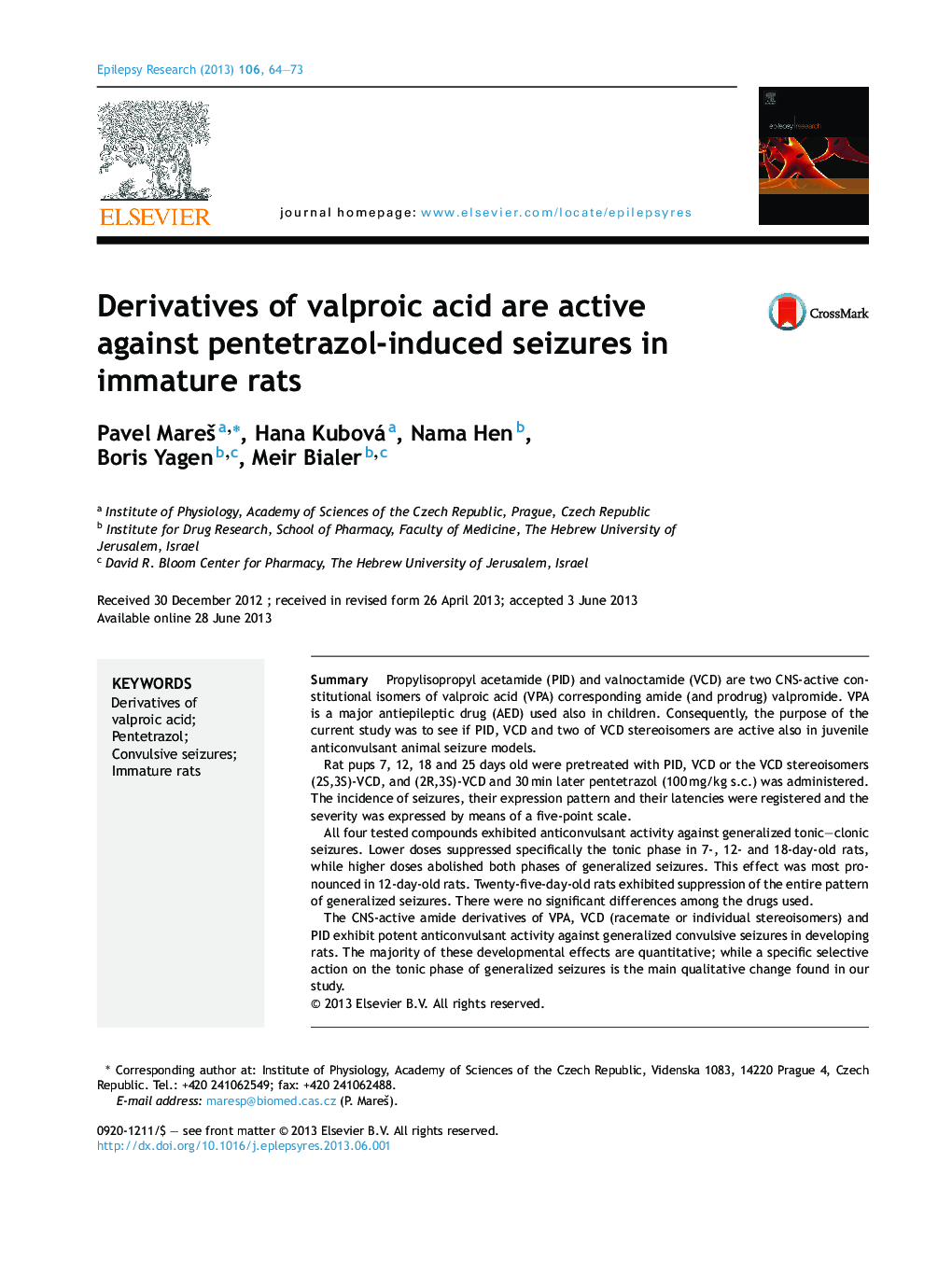| Article ID | Journal | Published Year | Pages | File Type |
|---|---|---|---|---|
| 6015730 | Epilepsy Research | 2013 | 10 Pages |
â¢Second generation derivatives of valproic acid were studied in immature rats.â¢Pentetrazol-induced convulsive seizures were used as a model.â¢Propylisopropyl acetamide and valnoctamide exhibit strong anticonvulsant action.â¢Two stereoisomers of valnoctamide are approximately equally efficient.
SummaryPropylisopropyl acetamide (PID) and valnoctamide (VCD) are two CNS-active constitutional isomers of valproic acid (VPA) corresponding amide (and prodrug) valpromide. VPA is a major antiepileptic drug (AED) used also in children. Consequently, the purpose of the current study was to see if PID, VCD and two of VCD stereoisomers are active also in juvenile anticonvulsant animal seizure models.Rat pups 7, 12, 18 and 25 days old were pretreated with PID, VCD or the VCD stereoisomers (2S,3S)-VCD, and (2R,3S)-VCD and 30Â min later pentetrazol (100Â mg/kg s.c.) was administered. The incidence of seizures, their expression pattern and their latencies were registered and the severity was expressed by means of a five-point scale.All four tested compounds exhibited anticonvulsant activity against generalized tonic-clonic seizures. Lower doses suppressed specifically the tonic phase in 7-, 12- and 18-day-old rats, while higher doses abolished both phases of generalized seizures. This effect was most pronounced in 12-day-old rats. Twenty-five-day-old rats exhibited suppression of the entire pattern of generalized seizures. There were no significant differences among the drugs used.The CNS-active amide derivatives of VPA, VCD (racemate or individual stereoisomers) and PID exhibit potent anticonvulsant activity against generalized convulsive seizures in developing rats. The majority of these developmental effects are quantitative; while a specific selective action on the tonic phase of generalized seizures is the main qualitative change found in our study.
